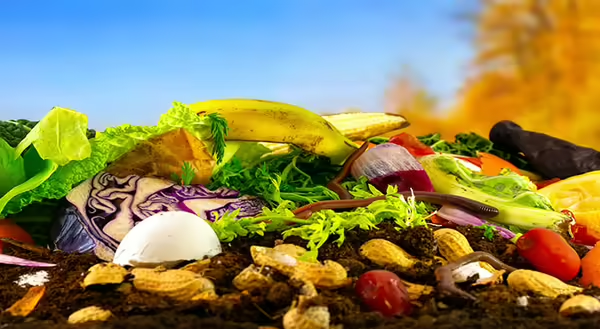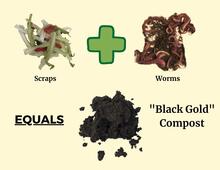
This spring has provided ample opportunity for DIY projects so here’s one more to add to the list.
Worm Composting!
For many, this might be unthinkable, but in reality, worm composting or vermicomposting is a great way to fulfill your mission to reduce, reuse, recycle. Vermicompost is mostly worm excrement which is also referred to as “castings.” Worm castings actually contain 5 to 11 times more plant-available nitrogen, phosphorus, and potassium which is comparable to commercial potting soil. And, it can be done throughout the year.
Yes, you read that correctly.
Worm composting can be done indoors with some readily available items:
-
two 10-gallon storage totes
-
shredded black/white newspaper, shredded leaves, shredded computer paper, shredded cardboard or sawdust for bedding
-
a drill
-
a spray bottle
-
food scraps
Learn how to build your worm bin!
So, after I’ve built the worm bin, what’s next?
It's time to buy some wiggly tenants- red worms (Lumbricus rubellus), brandling worms (Eisenia fetida), and European nightcrawlers (Eisenia hortensis) are the best choices for vermicomposting and can be purchased online. These earthworms are surface dwellers which means they will live in the upper layers of rich, organic matter in piles of decaying litter. They do not burrow like the common earthworm found in backyards. Vermicomposting worms can also survive in temperatures ranging from 40⁰ to 90⁰ F but prefer between 55⁰ and 77⁰ F. It is also best to keep them in lidded bins in garages, closets, or basements. That way the interior of their home remains relatively dark.
And, now for the most important question-or at least your worms will think so- what should I feed them?
Feeding your wiggly friends kitchen scraps is ideal because let’s face it, we cook year-round, so scraps are plentiful. Small pieces of fruits and vegetables(including peels), ground eggshells, coffee grounds, tea bags(with the staple removed), and small amounts of moistened plain cereal, bread and pasta will keep your worms happy.
However, these are no-no's: meat, poultry, fish, dairy products, oils, and strongly flavored foods such as garlic and onions. Hey, even worms are choosy!
In the beginning, feeding will be a lot of trial and error to see just exactly how much these friends are going to consume in a week. Whatever scraps are added should be buried in the worm bedding to keep from attracting insects and producing foul odors. Varying the location where the food is buried will also be helpful to eliminate pockets of excess waste. Too much food can overwhelm your worms and they won’t have time to digest everything, so the scraps will start to smell and attract insects. Worms do not appreciate uninvited guests! Some insects and worms do not play nice.
Besides, your wiggly friends are already working hard since they can eat ½ their body weight in food EACH day!
Let’s think about that for a minute. One pound of worms (about 500 worms) can eat between ½ and 1 pound of waste per day and can double in population in a month if they have sufficient food, water, and shelter.
No doubt about it, those are some efficient wiggly eaters.
To learn more about vermicomposting make sure to read Oregon State University Extension’s “Composting with Worms" and take the first step in making your own vermicompost.
Want to get notified when new Know How Know More posts are available? SIGN UP HERE
Know How Know More: University of Illinois Extension is the original go-to source for growers, DIYers and jacks of all trades. For more than a century, Illinois Extension expert educators have shared university research in communities across the state. Get advice you can trust on horticulture, agriculture and nutrition in the Know How Know More blog. Build your best life. Trust Extension to help.
Doug Gucker is an Illinois Extension Local Food Systems and Small Farms Educator serving DeWitt, Macon and Piatt Counties in Central Illinois. He is a Certified Crop Advisor and works to help producers improve their profitability and sustainability with programs and feedback on farm management strategies, soil health, nutrient management, integrated pest management and grazing. Find Doug on Twitter at @SoilWaterDoug, by email at dgucker@illinois.edu or call 217.877.6042. Subscribe to his podcast Out Standing in the Field wherever you listen to podcasts.
Maria Lightner is a Marketing and Communications, Extension Program Coordinator.
